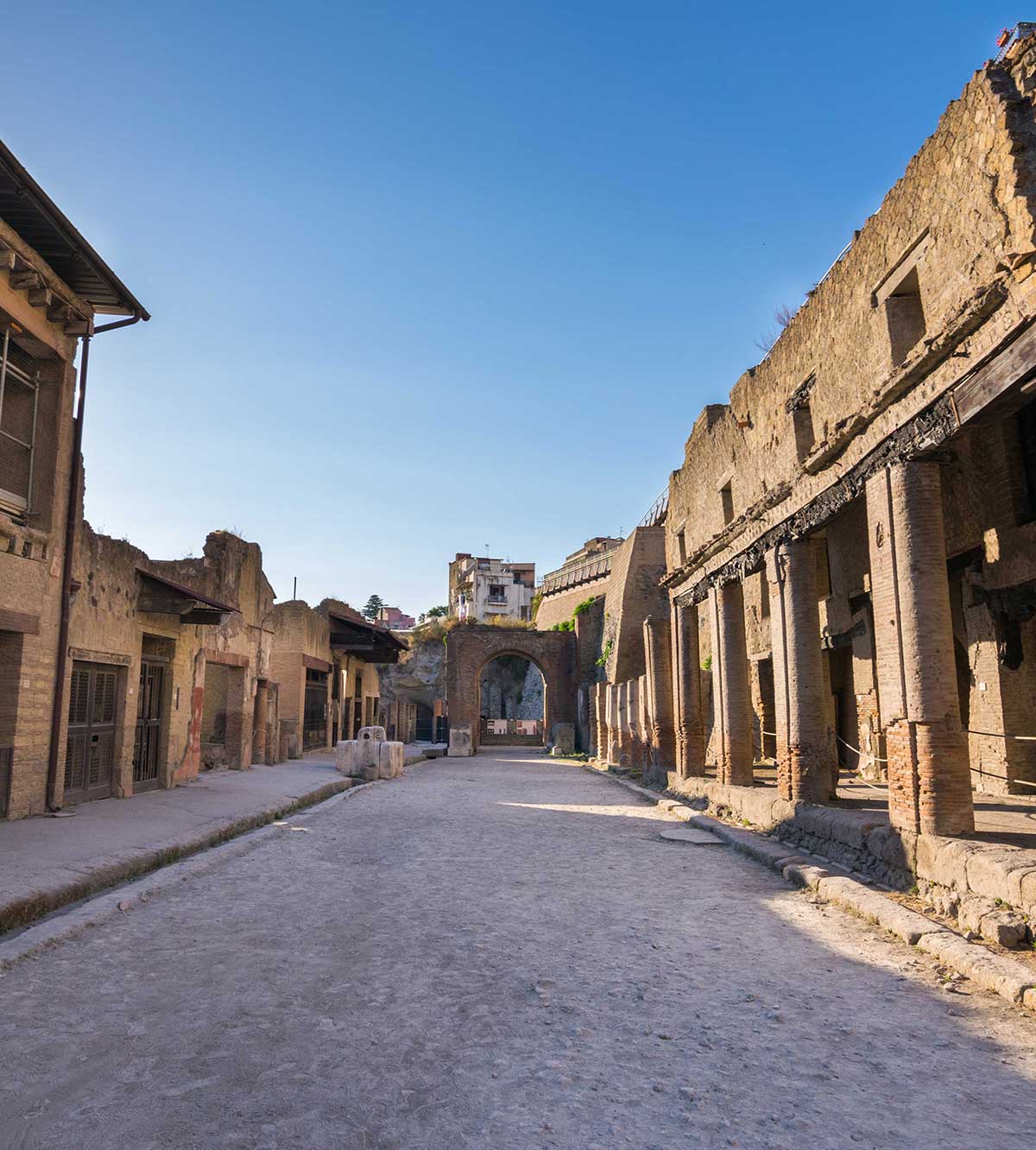Pompeii
Pompeii is the only site in the world capable of demonstrating ancient Roman life in its entirety. The great eruption of Vesuvius in 79 AD, although tragic, had the merit of locking everything in place: houses, inhabitants, objects, roads.
Once inside the archaeological site, the atmosphere of the place will catapult you back years and you will feel as if you are reliving everyday scenes from that time.
Pompeii offers unique emotions and never ceases to amaze, year after year new discoveries are made within the archaeological area.
The archaeological area covers about sixty-six hectares and is one of the most important archaeological sites in the world, recognised by UNESCO as a world heritage site.
The visit takes at least a couple of hours; a full day is recommended to visit the entire archaeological site.

Pompei
Pompeii is the only site in the world capable of demonstrating ancient Roman life in its entirety. The great eruption of Vesuvius in 79 AD, although tragic, had the merit of locking everything in place: houses, inhabitants, objects, roads.
Once inside the archaeological site, the atmosphere of the place will catapult you back years and you will feel as if you are reliving everyday scenes from that time.
Pompeii offers unique emotions and never ceases to amaze, year after year new discoveries are made within the archaeological area.
The archaeological area covers about sixty-six hectares and is one of the most important archaeological sites in the world, recognised by UNESCO as a world heritage site.
The visit takes at least a couple of hours; a full day is recommended to visit the entire archaeological site.



Historical overview
Pompeii was founded by the Oscans in the 8th century BC, occupied by the Samnites in the 5th century and conquered by the Romans in 80 BC.
In 79 AD it was buried by the eruption of Vesuvius, a blanket of lapilli and ash covered the city.
Some of the inhabitants died trapped during the first eruptive phase while others were hit by a pyroclastic, high-temperature flow that caused instantaneous death by thermal shock.
Today, some casts of the victims are displayed in metal and glass showcases in the ‘Museo Pompeiano’ while others are kept in glass cases or protected by canopies at the site of their discovery, such as in the Orto dei Fuggiaschi.
The casts are also the subject of inspiration for poets and artists, including Primo Levi, with his poem ‘The Girl of Pompeii’, and Roberto Rossellini, who dedicated a famous scene in ‘Journey to Italy’ to the discovery of some of the casts.
The city had an elliptical plan and was surrounded by walls, criss-crossed by paved streets that still bear the furrows left by the passage of chariots. The streets had high pavements and were lined with dwelling houses, shops, taverns and hotels; there were also numerous stalls, evidence of the city’s commercial vitality.
Historical overview
Pompeii was founded by the Oscans in the 8th century BC, occupied by the Samnites in the 5th century and conquered by the Romans in 80 BC.
In 79 AD it was buried by the eruption of Vesuvius, a blanket of lapilli and ash covered the city.
Some of the inhabitants died trapped during the first eruptive phase while others were hit by a pyroclastic, high-temperature flow that caused instantaneous death by thermal shock.
Today, some casts of the victims are displayed in metal and glass showcases in the ‘Museo Pompeiano’ while others are kept in glass cases or protected by canopies at the site of their discovery, such as in the Orto dei Fuggiaschi.
The casts are also the subject of inspiration for poets and artists, including Primo Levi, with his poem ‘The Girl of Pompeii’, and Roberto Rossellini, who dedicated a famous scene in ‘Journey to Italy’ to the discovery of some of the casts.
The city had an elliptical plan and was surrounded by walls, criss-crossed by paved streets that still bear the furrows left by the passage of chariots. The streets had high pavements and were lined with dwelling houses, shops, taverns and hotels; there were also numerous stalls, evidence of the city’s commercial vitality.
Useful tips
Guided tour
We suggest to book a tour guide in order to visit the main attractions of the site.
Dress code
We suggest to wear appropriate clothing for the visit: trainers and comfortable clothing, hat for protection from the sun.
Food and beverage
It is advisable to take a small bottle of water with you. There is a bar and public toilets inside the archaeological site.
Children
We suggest the use of a baby carrier for small children.
FAQ
How many people is the excursion for?
The excursion is available for a maximum of 8 people.
where does the excursion start?
The meeting point with our driver will be at the accommodation facility where you are staying.
how long does the visit last?
A visit to the archaeological park of Pompeii takes at least a couple of hours, a full day is recommended to visit the entire site.
Is it possible to choose the departure time?
During the summer, we recommend an early start in the morning but the tour can be customised. You can request more information in the form below.





